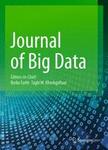版权所有:内蒙古大学图书馆 技术提供:维普资讯• 智图
内蒙古自治区呼和浩特市赛罕区大学西街235号 邮编: 010021

作者机构:Hainan Normal Univ Sch Informat Sci & Technol Haikou 571158 Hainan Peoples R China Hainan Trop Ocean Univ Sch Comp Sci & Technol Sanya 572022 Hainan Peoples R China Hainan Trop Ocean Univ Sch Ocean Informat Engn Sanya 572022 Hainan Peoples R China Sanya Informat Infrastruct Investment & Construct Sanya 572022 Hainan Peoples R China Haikou Univ Econ TJ YZ Sch Network Sci Haikou 571127 Peoples R China
出 版 物:《JOURNAL OF BIG DATA》 (J. Big Data)
年 卷 期:2025年第12卷第1期
页 面:1-55页
核心收录:
基 金:Hainan Province Science and Technology Special Fund [ZDYF2024GXJS034] Innovation Platform for Academicians of Hainan Province [YSPTZX202036] Hainan Provincial Natural Science Foundation of China [621MS0787, 621QN271] Education Department of Hainan Province [Hnjg2019-50, Hnky2024ZD-24] Sanya Science and Technology Special Fund [2022KJCX30]
主 题:Phishing cybercrimes Uniform resource locator Machine learning classification Shapely additive explanations Recursive feature elimination Hyperparameter optimization
摘 要:With the increasing reliance on digital platforms for shopping, communication, and meetings, users are more exposed to cyber threats like phishing. These attacks often involve fraudulent websites designed to steal sensitive information, such as passwords and credit card details, by mimicking legitimate sites. Attackers use various deceptive techniques, including link manipulation, filter evasion, covert redirection, website forgery, and social engineering. This study introduces an advanced phishing detection framework using machine learning (ML) models. A dataset of 1,353 URLs (702 legitimate, 103 suspicious, and 548 phishing) was compiled, with nine key features extracted for classification. Four ML classifiers-Categorical Boosting, Random Forest (RF), Decision Tree (DT), and Extreme Gradient Boosting (XGB)-were employed, with cross-validation ensuring robust model evaluation. Feature selection was conducted using SHapley Additive Explanations (SHAP) and Recursive Feature Elimination (RFE) to enhance interpretability and computational efficiency. To further refine classification accuracy across legitimate, suspicious, and phishing categories, hyperparameter tuning was performed using four nature-inspired optimization algorithms: Golden Jackal Optimization, Dandelion Optimization, Coati Optimization, and Puma Optimization. These algorithms were chosen for their strong global search capabilities and adaptability to complex datasets, ensuring optimal parameter selection for improved model performance. The study s main contribution lies in integrating these optimization techniques with ML classifiers, significantly improving phishing detection accuracy while reducing computational complexity. Experimental results demonstrated that XGB-based models, particularly XGPO, achieved the highest performance across two feature-selection scenarios. In Scenario 1, Accuracy = 0.980, Precision = 0.981, Recall = 0.980, F1-score = 0.980, MCC = 0.965, AUC = 0.985. In Scenario 2, Accur